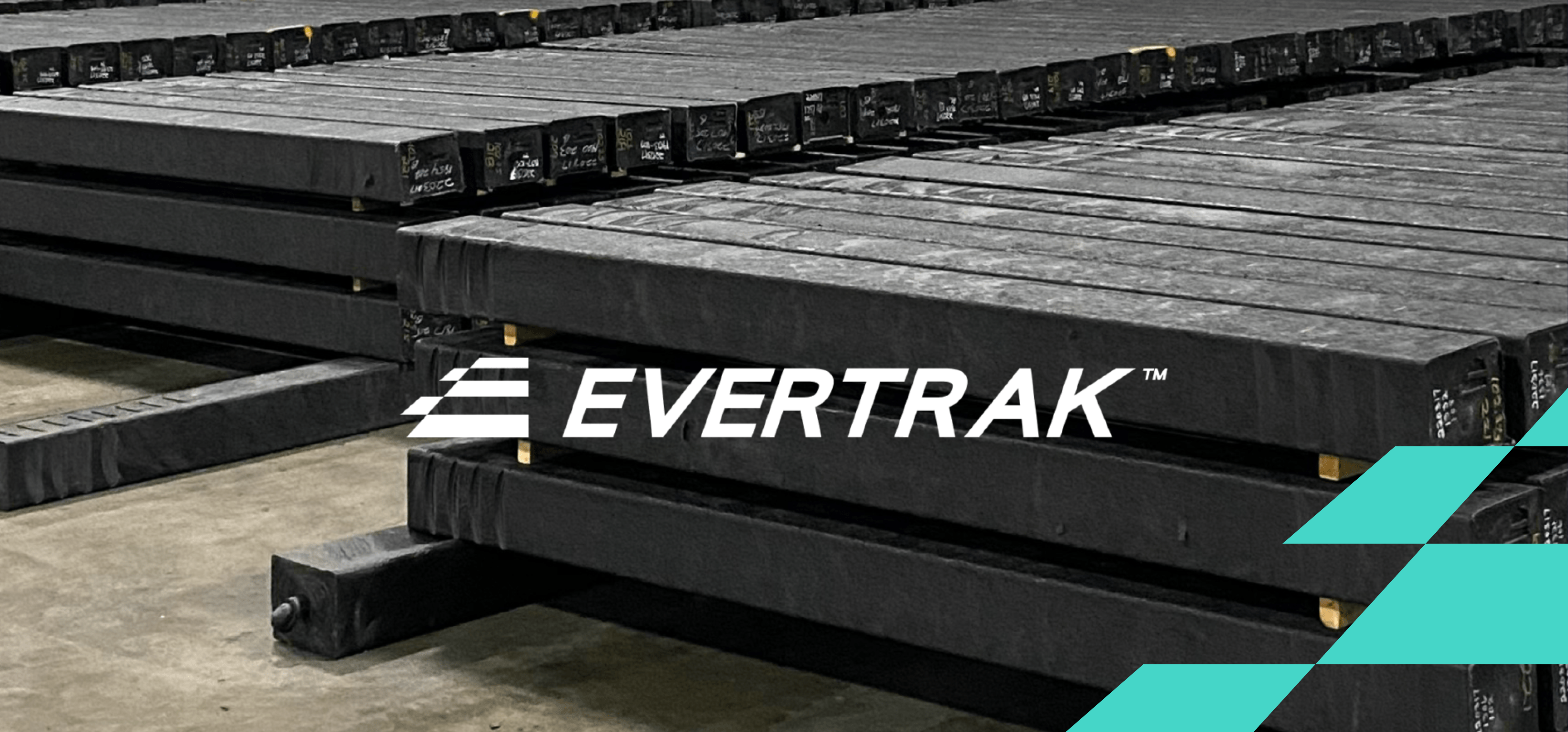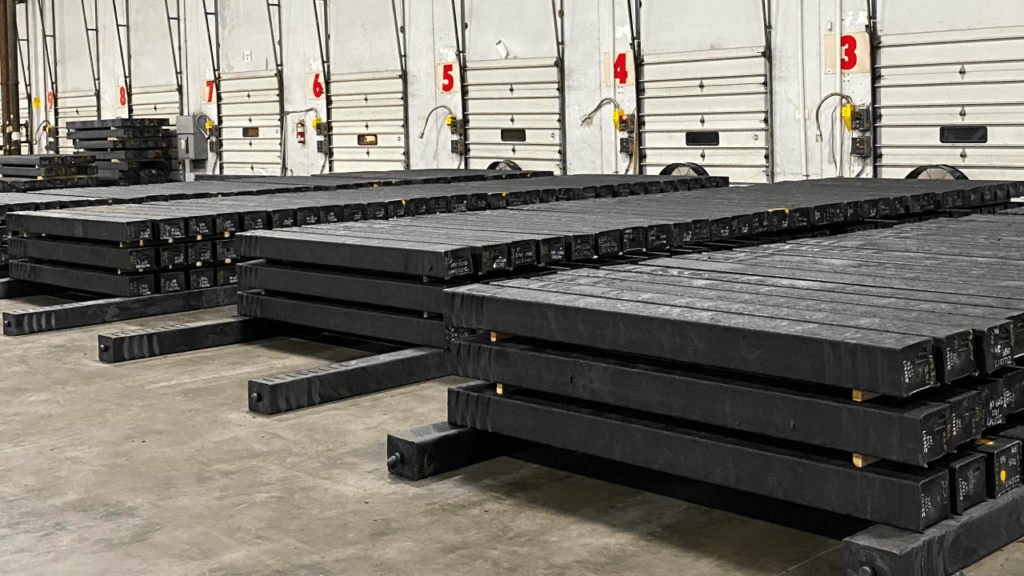Q: What makes Evertrak ties different from traditional wood ties?
A: Evertrak ties are manufactured using Glass Fiber Reinforced Polymer (GFRP), resulting in consistent quality and performance. Unlike wood ties that can vary by species and deteriorate unpredictably, every Evertrak tie meets exact specifications.
Q: How long do Evertrak ties last compared to wood ties?
A: While wood ties typically require replacement every 5–8 years in challenging environments, Evertrak ties are engineered to last 50+ years, significantly reducing maintenance cycles and track downtime.
Q: What about the environmental impact?
A: Evertrak ties offer superior environmental benefits. They don’t require creosote treatment (which faces increasing regulatory scrutiny), and at end-of-life, they can be recycled into new ties rather than requiring disposal in landfills or cogeneration facilities.
Q: Why haven’t composite ties been widely adopted before?
A: Early composite tie ventures often compromised quality to reduce costs, leading to failures. Evertrak has spent 7–8 years perfecting its manufacturing process and maintaining consistent quality standards, overcoming the industry’s negative experiences with inferior products.
Q: What’s the cost comparison?
A: While initial costs are higher than wood ties, the total cost of ownership favors Evertrak when considering: longer lifespan, reduced maintenance, elimination of disposal costs, and decreased track downtime. The company is also working on next-generation products to improve the upfront cost equation.
Q: What special applications are ideal for composite ties?
A: Railroad crossings (which deteriorate rapidly under asphalt), bridge installations (where replacement costs are high), and high-moisture environments where wood ties experience accelerated decay are particularly well-suited for composite ties.
Q: How does Evertrak ensure quality control?
A: The company uses PLC-controlled batching and injection processes, X-rays every tie, conducts batch sampling, and has implemented lean manufacturing principles to ensure consistent, repeatable performance.
Q: Can Evertrak ties handle heavy loads?
A: Yes, Evertrak ties meet or exceed all AREMA (American Railway Engineering and Maintenance-of-Way Association) specifications, including 7,000+ psi bending strength and 415,000 psi modulus of elasticity.
Q: What’s the production capacity?
A: The current facility can produce approximately 150,000 ties annually, operating 24/7 with planned maintenance windows.
Q: Are major railroads interested in using Evertrak ties?
A: Yes, representatives from Norfolk Southern, CSX, and other major railroads attended the summit, and several—including Union Pacific—are conducting trials or implementing Evertrak ties in specific applications.


